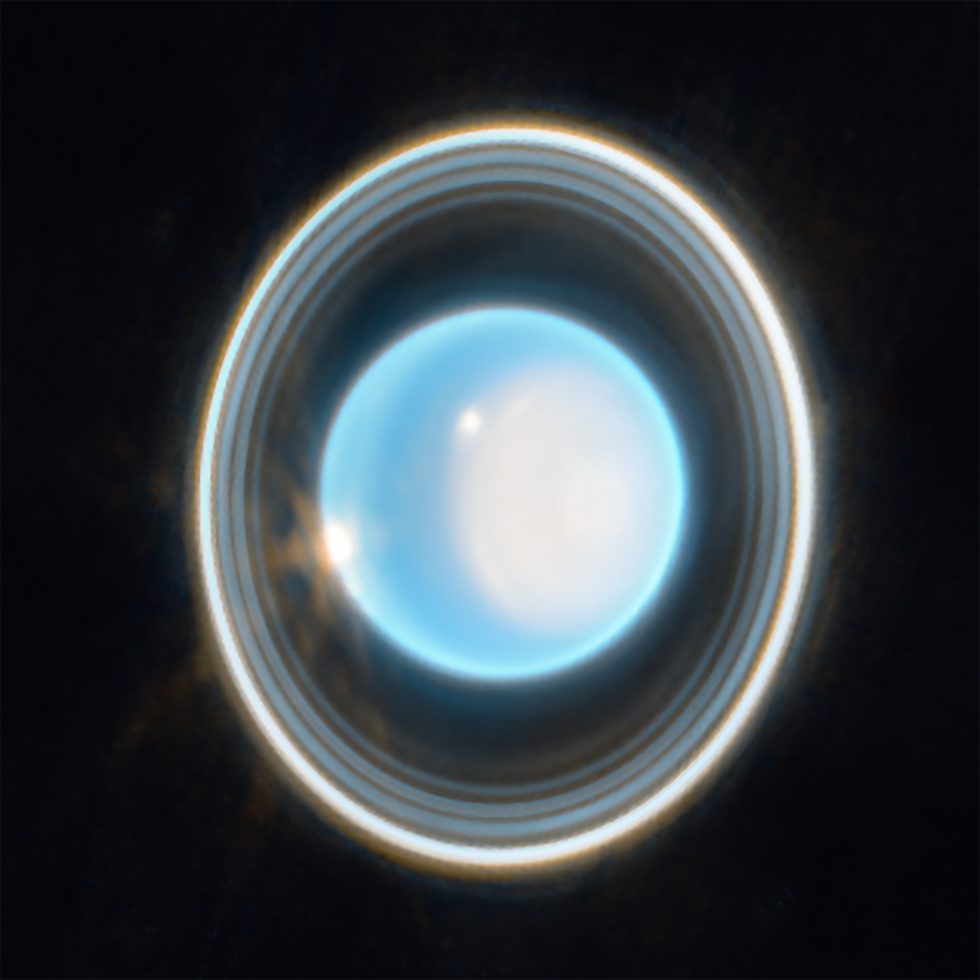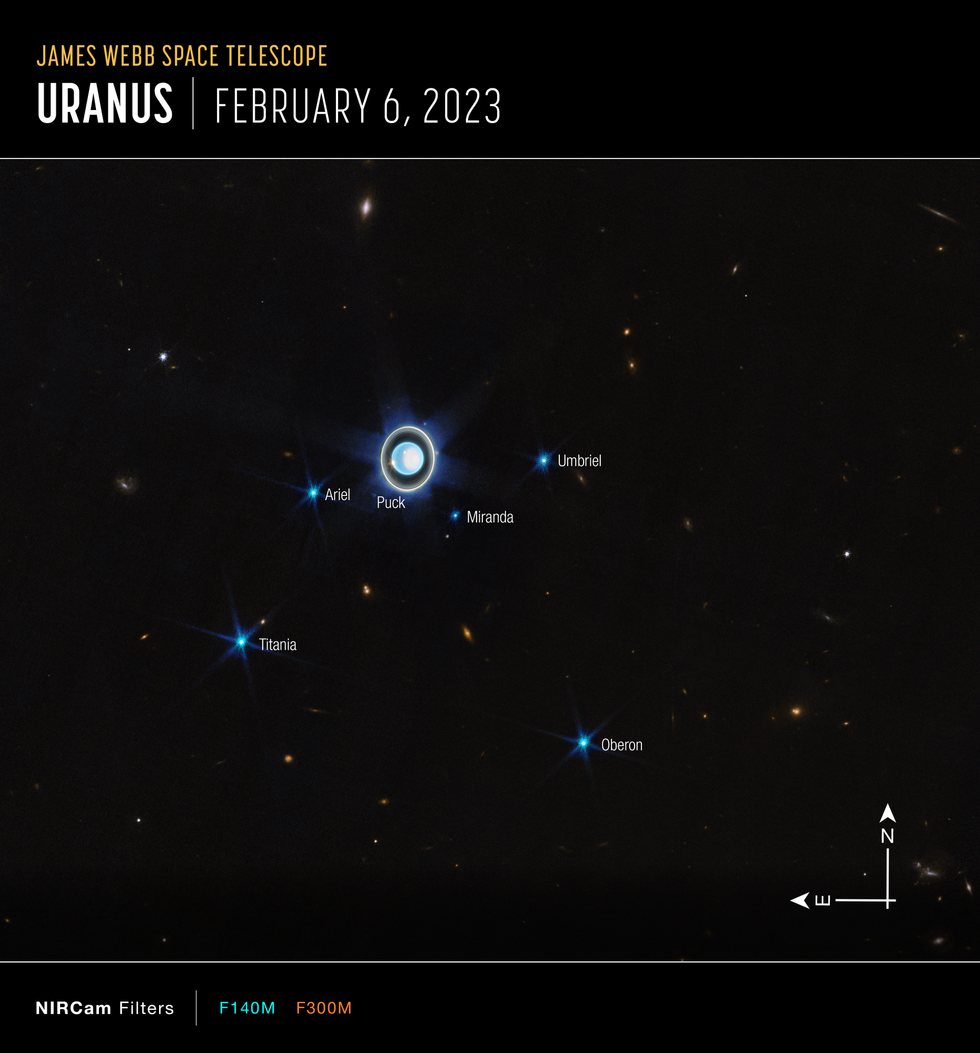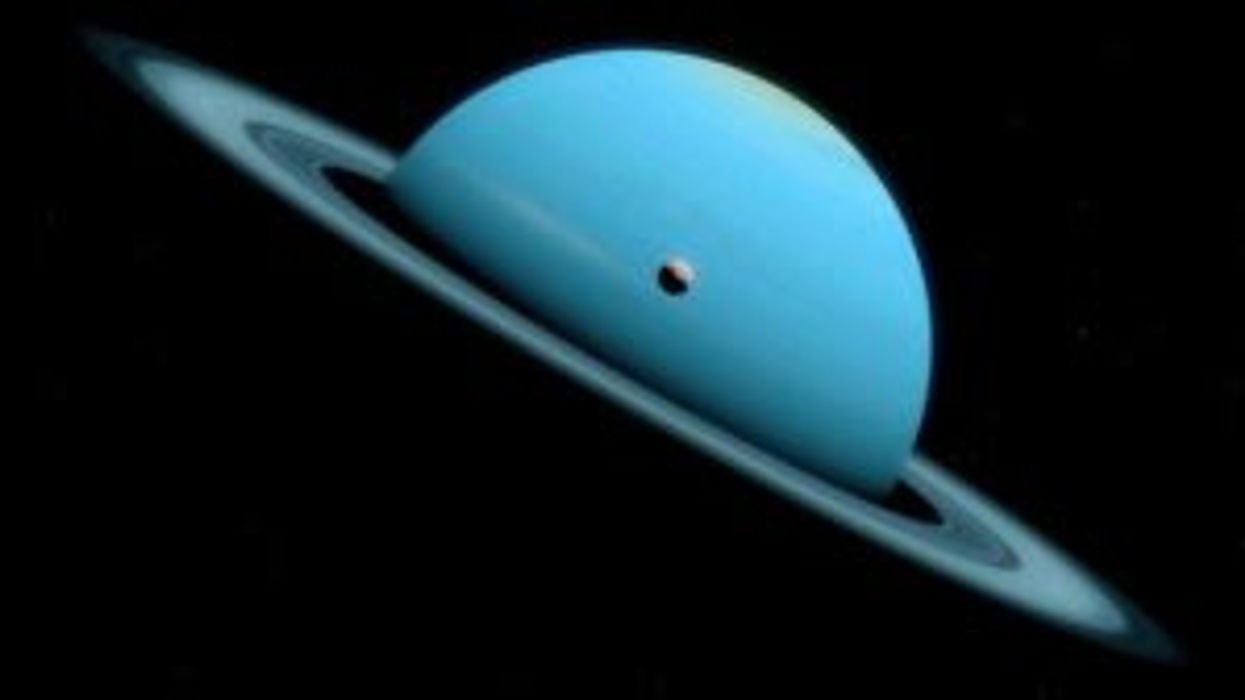Ariana Baio
Apr 07, 2023
Is It Possible That There Are Secret Oceans Under the Surface of …
content.jwplatform.com
As technology becomes more advanced, there are greater opportunities to see planets, stars, and elements of space better than ever before.
Now, with the power of the James Webb Telescope, scientists are able to see, and photograph, Uranus with incredible high-definition.
On Thursday, NASA and the James Webb Telescope released new images of the ice-giant planet showing its distinct blue color and bright rings. The telescope was able to capture some of the faintest rings of the planet, which have only been seen by the Voyager 2 spacecraft and Keck Observatory.
Sign up for our free Indy100 weekly newsletter
In the image, people can see a bright white-like section of Uranus which scientists believe is the northern polar cap, and possibly storm clouds.
Uranus is the seventh planet furthest from the Sun and although it is not the furthest in the solar system it is the coldest.
The average temperature on the ice giant is -320°F (195°C) and with wind speeds that can reach 560 mph (900 kph), Uranus is completely unsuitable for living organisms.

Uranus is unique in that it rotates on its side at a roughly 90-degree angle, unlike every other planet.
Because of this, Uranus experiences extreme seasons that last for roughly 21 years as the planet takes 84 years to complete an orbit around the sun.
Additionally, the planet is mainly made up of “icy” materials- water, methane, and ammonia which is why it is considered an “ice giant.”

The Webb Telescope was able to capture 11 of Uranus’ 13 known rings as well as many of Uranus’ 27 moons.
Many of Uranus’ moons are too small and faint to be seen with the Webb Telescope but the six brightest were identifiable with a “short” 12-minute exposure and two filters.
Scientists are confident they will be able to discover more about Uranus with the Webb Telescope’s capabilities.
Have your say in our news democracy. Click the upvote icon at the top of the page to help raise this article through the Indy100 rankings.
Top 100
The Conversation (0)














